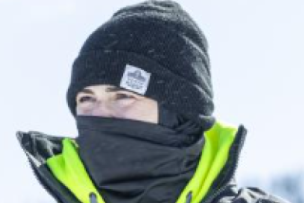Honeywell’s safety innovations protect the livelihoods of 500 million workers. With a legacy spanning over a century, Honeywell provides comprehensive PPE solutions from head-to-toe. Honeywell offers a vast of product solutions from brands you trust like Miller®, Uvex®, Howard Leight, North®, and Fibre-Metal®.
Emergency responders play a critical role in saving people’s lives, but sometimes, rescuers need to be rescued, too. For instance, medevac planes get lost in cold, pitch-black Alaskan waters, so search and rescue teams are deployed and endure long distances and severe weather conditions to find them in time. Responsiveness is critical, as the severely injured don’t survive without early medical treatment and rapid transportation to a hospital.
But what makes a search and rescue mission successful?
The work behind search and rescue
In an emergency, every moment counts.
However, rescuing people in distress situations, whether lost at sea, on a mountain hike or in an aviation incident demands an impeccable organization of resources and the ability to make timely and informed decisions.
SAR missions are coordinated by a Rescue Coordination Center (RCC). The RCC is responsible for obtaining and evaluating incident data, determining the type of emergency equipment needed, notifying authorities, briefing and debriefing SAR personnel, arranging delivery of supplies to sustain survivors, maintaining accurate, up-to-date records, and more.
Whether working on land, air or sea, Rescue Coordination Centers (RCCs) are responsible for conducting and coordinating a rescue mission after a distress alert has been received via COSPAS-SARSAT, radio, phone, SMS or other communication channels.
The quicker a distress signal is raised and received, the quicker a SAR team can be dispatched to save lives. That’s why tracking technology such as Honeywell’s Medium Earth Orbit Local User Terminal-600 (MEOLUT-600) should receive, decode, and accurately identify the location of emergency distress beacon signals almost instantaneously.
Bear in mind, RCCs cover large search and rescue areas. For instance, the Canadian Coast Guard’s Search and Rescue Services Program responded to approximately 9,000 search and rescue incidents between 2011-2015, covering an area spanning 15.5 million square kilometers.
Improving situational awareness
An accurate perception of the emergency is key for rescue mission success. To make sense of the data, different fields and organizations need to have a common view of the emergency incident. On the contrary, insufficient or poorly communicated information can lead to a lack of coordination effectiveness and misuse of existing resources.
One way to improve situational awareness is through an information management system that offers a shared, real-time view of all the critical information and can adequately cope with the dynamic nature of the emergency management process.
Preparedness is critical
The best and bravest professionals need a quick, comprehensive view of assets and people.
SARMaster 600 is an IAMSAR-compliant mission management system which allows complete visualization of SAR data, including emergency beacon locations and information about local SAR resources like vessels, helicopters, and personnel.
SARMaster 600 is designed for rapid and intuitive data entry so that operators can focus on the real job of rescue planning and coordination.
SARMaster 600 incorporates multiple internal and external data sources such as GIS, incident information, SAR resources, ship and aircraft registries, all in one view. It delivers data in a browser-accessible web-based application hosted securely in customer data centers or the Honeywell managed cloud.
The web application can run on devices ranging from a laptop PC to a multi-monitor workstation or video wall, where any of its modules such as the Map, Incident records, or the Resource directory can be open in separate, integrated browser windows. The SARMaster system also features extensive SAR planning tools you can use to coordinate all SAR efforts. Plus, all log entries, briefing, resources, contact information, and COSPAS alerts can be archived. This way SARMaster 600 preserves full details of an incident for training or legal review years after the fact, with authenticity and accuracy.
Designed for all types of RCCs, SARMaster 600 is deployed in 15+ countries, including the largest COSPAS-SARSAT adopters and other SAR agencies around the world.
About Honeywell Search and Rescue Solutions
Honeywell Global Tracking (HGT) has more than 35 years of experience as an end-to-end search and rescue (SAR) offering including satellite ground stations, mission control centers (MCCs), and rescue coordination centers (RCCs). Honeywell provides fixed antennas, terminals, consoles, and software applications to quickly locate missing assets on land or at sea and minimize emergency response times.
Previously Featured on Honeywell's News and Events blog.








Talk to Us!
Leave a reply
Your email address will not be published. Required fields are marked *